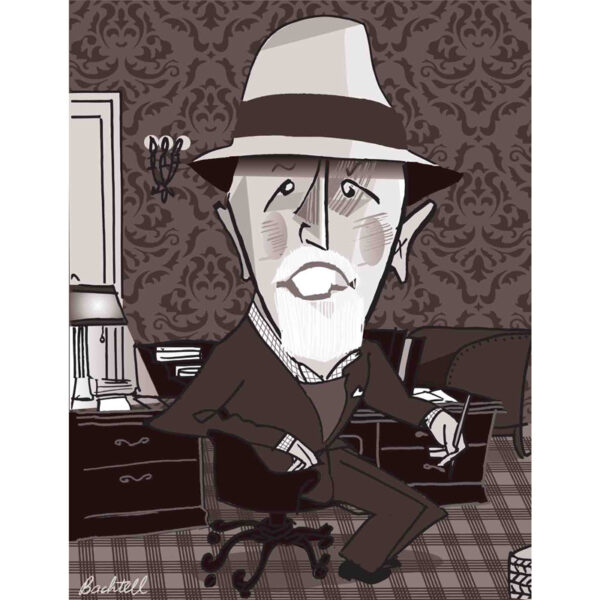A WELL-BUILT LIFE
By Sherry Thomas
ILLUSTRATION BY TOM BACHTELL
By Sherry Thomas
ILLUSTRATION BY TOM BACHTELL

Imagine white lines on blue paper—a structural rendering of a life to be influenced by its uncanny, yet serendipitous, exposure to work by some of the world’s greatest architects. Thus was the blueprint that renowned local historic preservation expert and author Arthur H. Miller was destined to follow from childhood in Kalamazoo, Michigan— growing up in a French Provincial home where Frank Lloyd Wright himself had once slept. “My parents bought it from a family that had commissioned Wright to build a new Usonian-type house on a fine bluff top site near town,” says Miller, emeritus Archivist and Librarian for Special Collections at Lake Forest College (LFC) and two-time president of the Lake Forest Preservation Foundation. “Wright had stayed with them during the planning process for the new home.” Miller recalls admiring the distinct housing styles in that area from an early age, even taking jobs working on estate gardens in and near his hometown. “I wrote a senior high school paper on Mr. Wright,” he says, adding that he continued to be intrigued by fine architecture wherever he went—from Kalamazoo to his junior year study abroad program in France and ultimately, Chicago. “At the University of Chicago, though I did not study architecture formally in graduate school, I worked at the Newberry Library—a striking Henry Ives Cobb building—and lived in a Pond & Pond apartment building and at Miesian 900 North Lake Shore Drive.” When he and wife, Janet, moved to Lake Forest in 1972 (both working at LFC) the couple settled into a quaint, Chicago-style bungalow on Wildwood Road, just off campus. He brought his passion for architecture with him. “I visited essentially all the great houses, when books were donated,” says Miller, explaining how he became inspired to begin sharing stories about Lake Forest landmarks while serving as board president for the Ragdale Foundation, the former summer home of architect Howard Van Doren Shaw. “My humanities PhD work of analysis for literature allowed me to look critically at these great houses and their histories and assess their significance.” In researching architectural provenance, Miller began writing about some of the city’s most prominent properties—with publications that include the Classic Country Estates of Lake Forest coffee table tome and the more recent Architectural Lake Forest: A Guide to National Register Historic Districts and Properties in Lake Forest, Illinois. It’s been a decades-long labor of love, one that has helped position Lake Forest’s architectural pedigree on a global scale. “Our architecture by Shaw, Adler, Frost & Granger, Lindeberg, Edwin Hill Clark, Wright, and many others is world class. Outsiders know this well,” says Miller, noting that the Traditional Building Conference’s decision to hold its Spring 2023 national event at the Tudor Revival Deer Path Inn was a “watershed moment” for the city. Today, his mission is to protect that architectural legacy through education, especially as new families move into the community. Whether it’s giving a local history presentation, his work as a Lake Forest Preservation Foundation director, or the articles he writes for its Preservation magazine, Miller is now the unofficial keeper of a different sort of blueprint—one that Shaw himself set forth more than a century ago.
Sign Up for the JWC Media Email